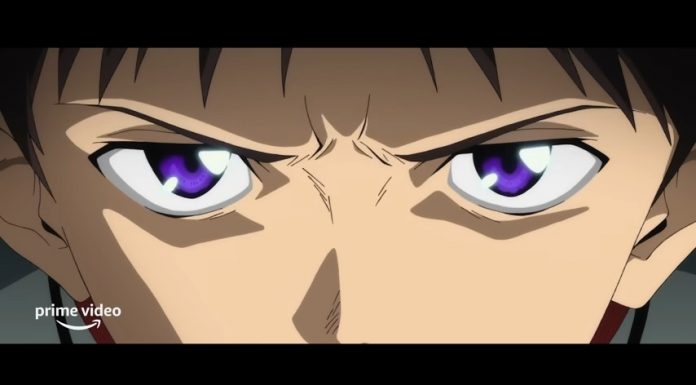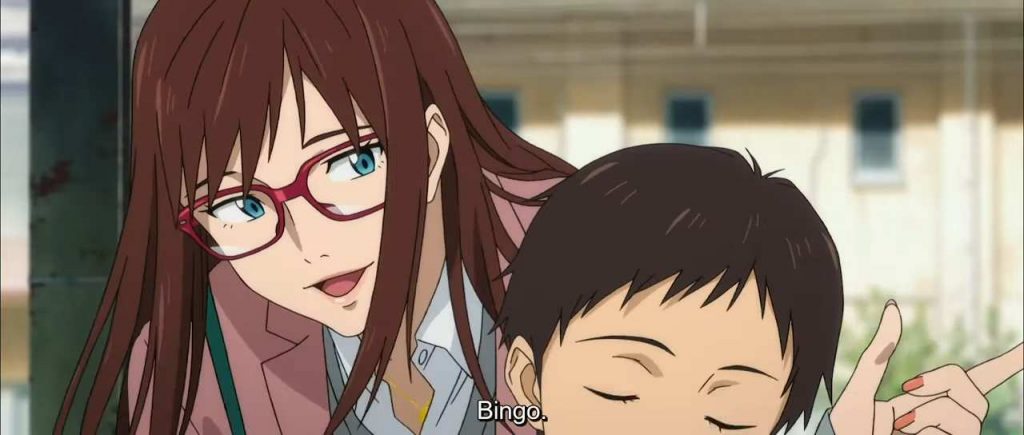The highly regarded 2021 Japanese animated science fiction picture Evangelion: 3.0+1.01 Thrice Upon a Time is the last entry in the Rebuild of Evangelion film series. Hideaki Anno co-wrote, co-directed, and co-produced the film, which has received high appreciation for its narrative, animation, direction, and depth of theme. Following multiple postponements, the movie finally debuted on March 8, 2021, attracting viewers with its poignant content and satisfying conclusions. It was widely praised and went on to become the highest-earning movie in the franchise as well as the second-highest-grossing movie in Japan for 2021.
As the film progressed, Evangelion viewers were treated to a feast of sights and emotions as it examined the fallout from the catastrophic events in Tokyo-3. In addition to exploring the nuances of interpersonal relationships, the movie introduces new characters and explores the fallout from Shinji Ikari’s choices. tvacute will break down the story, and examine the complexities of the resolution.
Evangelion: 3.0+1.01 Thrice Upon a Time Movie Plot
The Evangelion story: 3.0+1.01 The captivating tapestry of Thrice Upon a Time interweaves the protagonists’ incredibly personal concerns with the fallout from apocalyptic events. As the narrative progresses, we are transported to the center of Paris, where Maya Ibuki’s Wille organization is working to bring Paris back to its former splendor. But there are obstacles in the way of this admirable endeavor since nerve forces are a persistent danger.
Asuka Langley Shikinami, Rei Ayanami, and the distraught Shinji Ikari go around Tokyo-3’s periphery, and the film’s scope expands. In addition to reintroducing well-known characters, this part lays the groundwork for the investigation of mature relationships and the difficulties of human development following catastrophic occurrences.
When the Wunder fleet unexpectedly comes under attack while defending against Nerv forces, a critical time occurs. In Unit-08, Asuka steals the spotlight as she displays her might in an amazing battle scene. The triumph of restoration through time for Paris highlights themes of resiliency and the human soul’s unwavering spirit.
Asuka, Rei, and Shinji come upon a community of survivors, the story takes a moving turn. The adult characters Toji Suzuhara, Hikari Horaki, and Kensuke Aida give depth to the plot. Kensuke, a technician, and Toji, a doctor with a family now, emphasize the passing of time and the effects of the Curse of Eva, which has stopped their physical aging.
Asuka vents her annoyance at Shinji, the movie explores the characters’ psychological aspects by making him face his own inner conflict. The complex character development is evidence of Hideaki Anno’s storytelling skill, which brings these animated characters to life.
Ryoji Kaji, Misato Katsuragi’s son, shows up, adding to the suspense in the story by giving a glimpse into the past and illuminating the fallout from the characters’ decisions. Rei Ayanami’s fragility—which stems from her need for continual exposure to LCL—adds another level of susceptibility to the drama that is developing.
When the Wunder shows up to pick Asuka up in the middle of these personal problems, Shinji decides to go with her in spite of the crew’s objections. The following seclusion of Shinji and Kozo Fuyutsuki’s distraught condition highlights the film’s deep emotional content.
The storyline takes a dramatic turn when Gendo Ikari and the distraught Fuyutsuki help to revive Unit 13. As the Wunder travels to Antarctica, the stage is set for an exciting confrontation. In addition to pondering on the unusual nature of time in the Evangelion universe, Asuka’s admittance of affection for Shinji and the disclosure of their suspended animation give their connection more nuance.
When a swarm of EVA units and Nerv ships approach the Wunder, the tension reaches a breaking point. Unit-13 is to be destroyed before it can reawaken, and Asuka and Mari Illustrious Makinami are trying to accomplish this. But a startling turn in the story is revealed when Unit-02 unexpectedly decides not to attack and changes into a “Pseudo-Evolved EVA”-Angel hybrid.
The fact that Asuka is a clone from the Shikinami manga adds a level of complexity to her character when her intriguing destiny is revealed. Audiences are kept on the edge of their seats as the fight intensifies in the meantime due to the appearance of a new EVA, Unit-09A.
Evangelion: 3.0+1.01 Thrice Upon a Time Movie: Ending Explained!
Thrice Upon a Time’s conclusion is a flurry of disclosures and bizarre encounters. Gendo reveals to Misato and Ritsuko the real reason behind the Shikinami and Ayanami clones: the start of the Human Instrumentality Project. When Unit-01 is activated, a bizarre “Anti Universe” serves as the arena for Shinji and Gendo’s conflict.
The “Lance of Gaius” and Misato’s sacrifice put Shinji in a position to change the course of events. This prepares the audience for moving farewells, a satisfying conclusion, and Shinji’s moving decision to create a “Neon Genesis” in which there are no Evangelion. Shinji is spared from having to make the same sacrifice thanks to Gendo and Yui’s sacrifice, which also restores the humans’ altered state following the Near Third Impact.
Shinji is shown waiting on a beach as the movie comes to an end, signifying a new beginning as reality resets. The characters, now adults, assemble at a railway station in the closing minutes of the “Final Evangelion,” which leaves viewers feeling hopeful and at peace after Mari’s return.
Why Did Yui and Gendo Sacrifice Their Lives?
The emotional center of the film’s resolution is the sacrifice made by Gendo and Yui. Haunted by the pain of losing Yui, Gendo looks for a “Additional Impact” to bring her back. The bizarre encounter in the “Anti Universe” reveals Gendo’s underlying goal and clarifies Shinji’s perception of his father’s intentions.
By sacrificing herself, Yui shows Shinji how much he cares and relieves him of the responsibility of starting the world over. This selfless deed is essential to the recovery of humanity and the return of the planet to its pre-impact condition. The story implies that despite their sad nature, the sacrifices are necessary for the protagonists to move on and for humanity to reach salvation.
Fundamentally, the sacrifice made by Gendo and Yui becomes a spark for a fresh start, beyond personal preferences. This sacrifice has a deep emotional impact that is consistent with the larger concept of closure and reconciliation that characterizes Evangelion’s final moments (3.0+1.01 Thrice Upon a Time).
The film’s complex storyline, nuanced emotional range, and the enormous sacrifices made by its characters all help to cement its reputation as an anime cinematic classic. In addition to wrapping up the Rebuild of Evangelion series, Evangelion: 3.0+1.01 Thrice Upon a Time makes a lasting impression on viewers’ emotions, inspiring contemplation on the intricacies of interpersonal relationships and the transformational potential of sacrifice.








